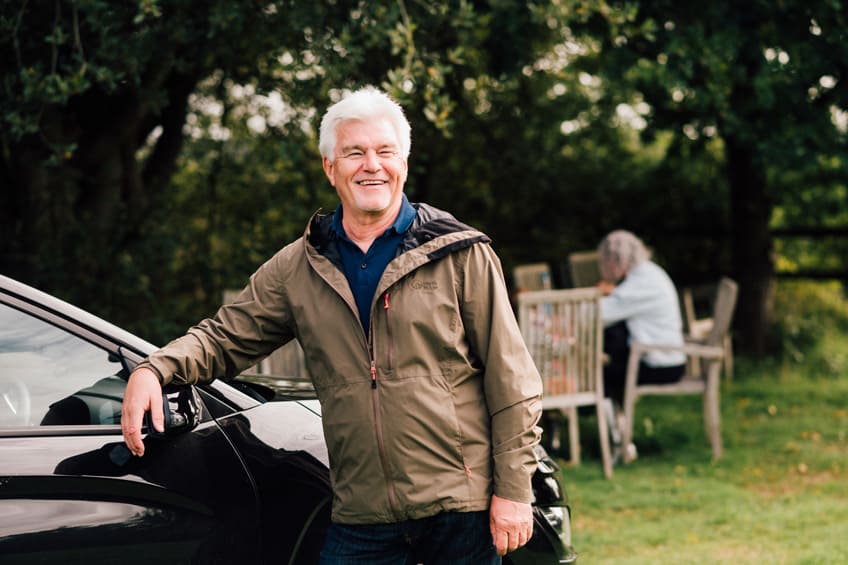
Refresh your driving skills
Are you an experienced driver looking to brush up on your skills? Whether you’re looking to ensure your driving is as sharp as it can be, or if you’ve lost a bit of confidence along the way, our Mature Driver Review can help.
Is a driving review right for me?
Our Mature Driver Review is suitable for anyone who wants to continue to improve their driving skills in later life.
Whether you're a grandparent looking to ensure the safety of your passengers, or simply want to top-up your skills, our review gives you the reassurance that you and your passengers are safe on the road.
We know just how important driving is, and how it represents the freedom to go anywhere, anytime. This is why drivers like Nigel choose our course, because it gives them the confidence and skills to carry on driving and maintain their independence...

"Having passed my test in 1980, and using my car daily, I thought should have my driving reviewed. The assessor was very friendly and professional, and I was put at ease very quickly.
After the review, I was pleased to hear that my driving was better than expected! I felt reassured my abilities are still pretty good and not as out of date as I thought I might be! I was given a some helpful pointers as to what I needed to improve on." - Nigel, 63
Read Nigel's full blog all about his experience here.
Book your Mature Driver Review





Try our free self-assessment
Our anonymous self-assessment will guide you through some of the checks drivers can make. These cover six key areas:
- Eyesight
- Physical mobility
- Tiredness
- Making decisions
- Medical conditions
- Driving history
Please note that any advice given is not a substitution for discussing concerns with a medical professional. You can also download and print a paper version of the self-assessment below.
Download our self-assessment
Safe Driving tips
1. Have regular eye tests. As we grow older, our eyesight can deteriorate or change - making it harder to see road signs and other road users. By having regular eye tests, older drivers can ensure that their eyesight stays within the legal limit to drive, and will make spotting hazards easier.
2. Check your medications. Always seek advice from a doctor or medical professional if you are taking medicines which may impair your ability to drive, or if you notice a change in your ability to drive while on medication.
3. Inform the DVLA. There are certain medical conditions which you must inform the DVLA about by law. The conditions include glaucoma in both eyes, strokes, heart conditions and certain forms of diabetes.
4. Remove distractions. For older drivers who may have corrected hearing or vision, keeping the vehicle free from distractions is vitally important. Ensuring full concentration on the road and potential hazards will often result in a calmer and safer drive.
5. Drive in good conditions. While having the independence to drive anywhere at any time is extremely important for older drivers, by planning your driving around good conditions (such as on clear, dry days) you can cut out some of the unnecessary risks of driving in wet or icy weather.
6. Keep your distance. Creating a ‘safety bubble’ of space around your vehicle will give you more time to prepare for unexpected hazards and can mitigate some loss in reaction times. It also gives you more time to plan and carry out simple procedures such as stopping at a junction.
Sitting Comfortably
Pedestrian Priority
Driving in Towns
Sharing with Cyclists

Over 70? Renew with confidence
To continue driving, your licence needs to be renewed when it expires on your 70th birthday, and every three years after that.
The DVLA will send you a letter each time your renewal is due, and you can find out more about the process on the gov.uk website.
For many drivers, knowing whether or not to renew their licence is an easy decision. However, one-to-one driving reviews can offer you that extra level of confidence that you’re making the right choice. Some drivers even choose to have a review every three years to coincide with their licence renewal dates.

The Renewal Checklist
You can renew your licence with the DVLA if:



We also recommend that drivers over 70:



Download and Print: Licence Renewal Tracker and Checklist
Click the button below to download our free ‘Licence Renewal Tracker and Checklist’.
This free resource summarises the information in the section of the web page, reminding you when to renew your licence and a checklist of the key points to consider before each renewal.
Licence Renewal Tracker and Checklist

